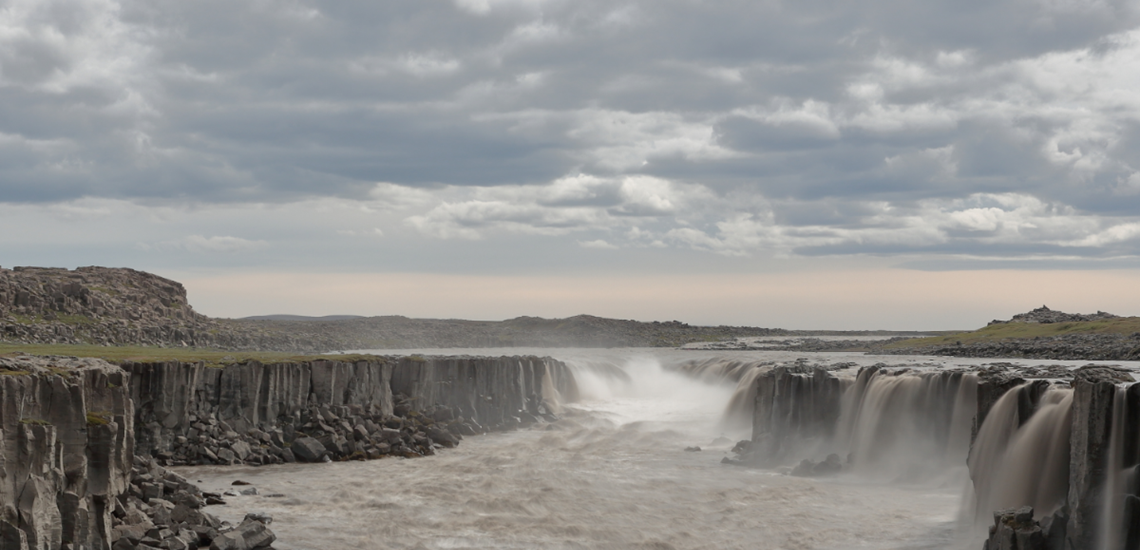Jökulsá á Fjöllum
The river Jökulsá á Fjöllum is one of the largest glacier rivers in Iceland. The river is the second longest in Iceland, about 206 km long and its average flow is about 250 m3 /sec. The river originates from the northern part of Vatnajökull glacier, from underneath Dyngjujökull glacier and Kverkjökull glacier, from Kverkfjöll volcano and its catchment area is around 7,700 km2.

Photo from Wikipedia
Jökulá á Fjöllum flows through the great black sand desert between Ódáðahraun lava field to the west and Kverkhnjúkur mountain north of Kverkfjöll mountain in the east. The river Kreppa unites Jökulsá á Fjöllum east of Herðubreið mountain. The river then forms a canyon nearby the waterfall Dettifoss, the so-called Jökulsárgrljúfur canyon. It is believed to have formed in a natural disaster at the end of the last Ice Age, about 12 to 10 thousand years ago when lakes that formed due to the melting of glaciers were suddenly drained. The latest outburst was for a around 2000 years ago and is believed to have formed Ásbyrgi.
The Jökulsá river now flows east of Ásbyrgi, north to Öxarfjörður fjord and on to a large sandy beach, which is build up on the pronunciation of the river from the end of the last Ice Age.